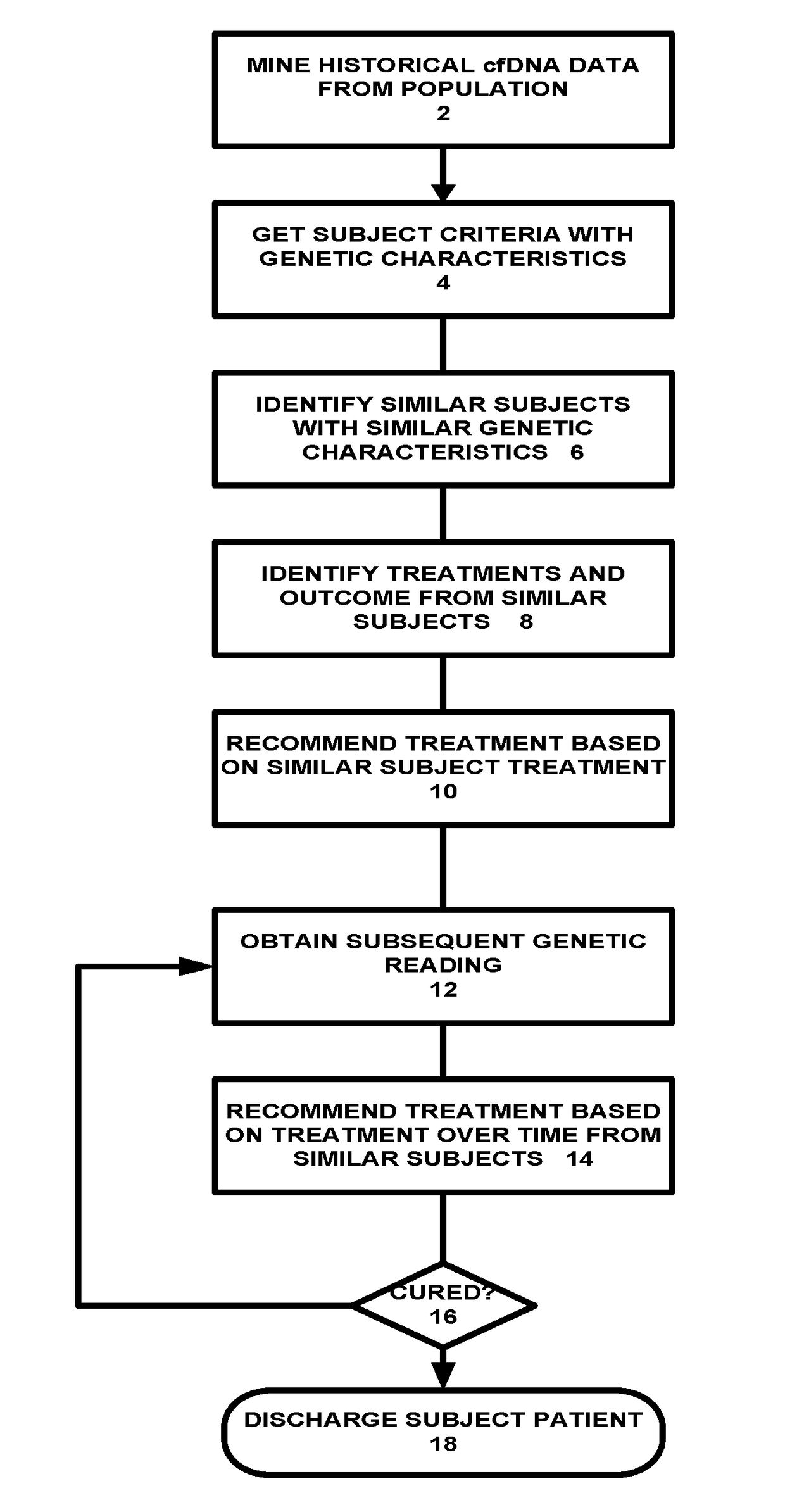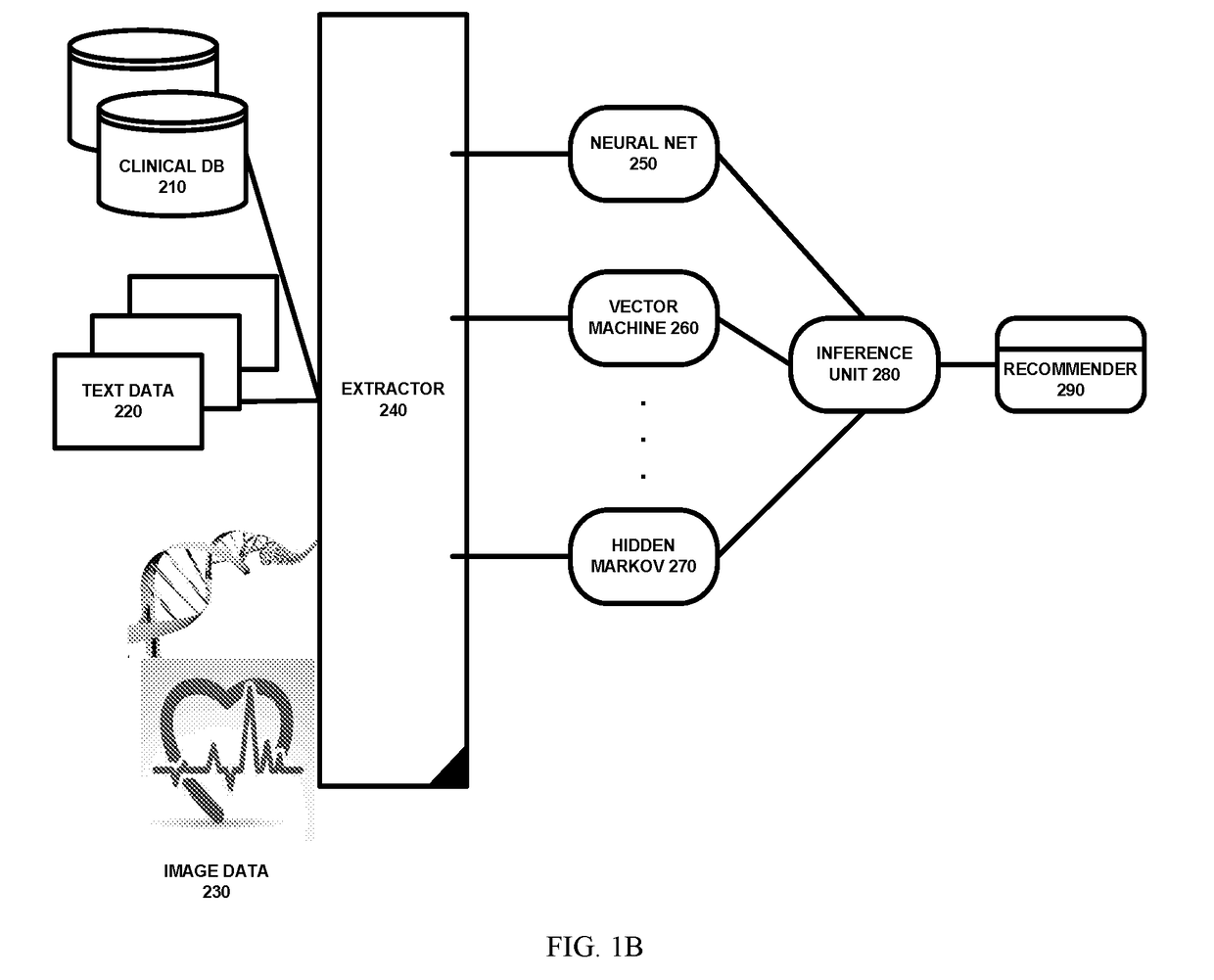Population based treatment recommender using cell free DNA
a cell-free dna and population-based technology, applied in the field of population-based treatment recommenders, can solve the problems of inability to help doctors match specific cancers with effective drug treatments, weak telltale genomic “signals”, and the plague of errors and biases in technology, so as to increase the sensitivity of detecting genetic variants and increase the read depth of polynucleotides
- Summary
- Abstract
- Description
- Claims
- Application Information
AI Technical Summary
Benefits of technology
Problems solved by technology
Method used
Image
Examples
Embodiment Construction
[0035]Cancer is a particularly heterogeneous disease with respect to both the numerous types of cancer and in how a particular type of cancer manifests in an individual. Because of this, it is difficult to predict the best course of treatment for a given patient. The present disclosure provides systems and methods for improving therapeutic outcomes for cancer patients.
[0036]Referring to FIG. 1A, a population based genetic cancer treatment system is shown. In one embodiment, the system mines historical cell-free DNA (cfDNA) from a population of cancer subjects or patients (2). The mining is done using genetic data captured from patients undergoing treatment or from healthy people. Once the data mining has been done, the system can recommend treatments based on prior successes and by matching the treatment to the subject / patient genetic characteristics. First, the system obtains subject criteria with genetic characteristics (4). Next, the system identifies similar subjects with simila...
PUM
| Property | Measurement | Unit |
|---|---|---|
| time points | aaaaa | aaaaa |
| time | aaaaa | aaaaa |
| frequency | aaaaa | aaaaa |
Abstract
Description
Claims
Application Information
 Login to View More
Login to View More - R&D
- Intellectual Property
- Life Sciences
- Materials
- Tech Scout
- Unparalleled Data Quality
- Higher Quality Content
- 60% Fewer Hallucinations
Browse by: Latest US Patents, China's latest patents, Technical Efficacy Thesaurus, Application Domain, Technology Topic, Popular Technical Reports.
© 2025 PatSnap. All rights reserved.Legal|Privacy policy|Modern Slavery Act Transparency Statement|Sitemap|About US| Contact US: help@patsnap.com



